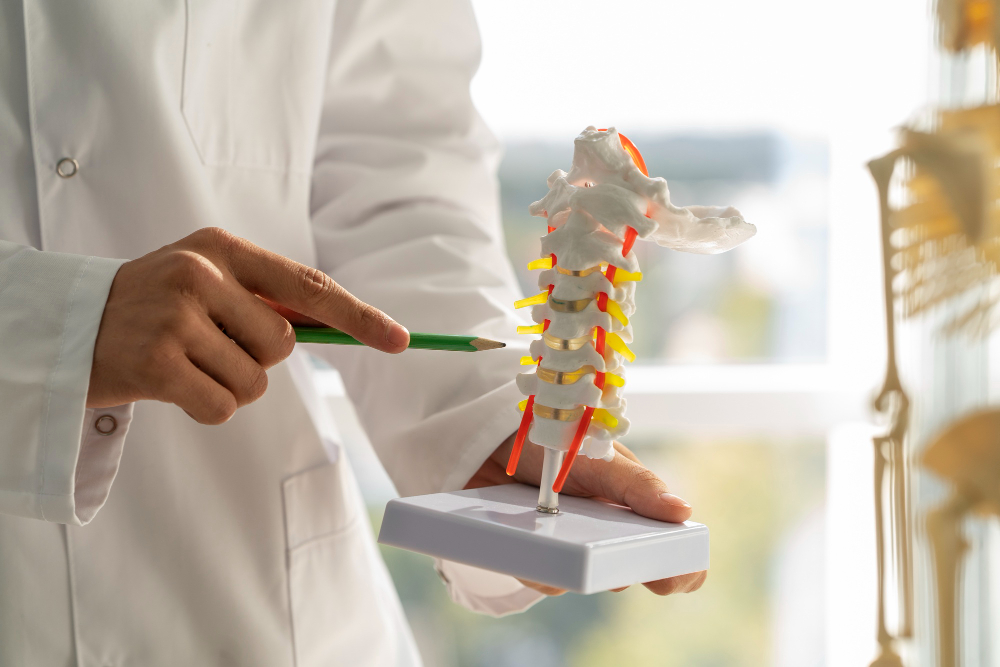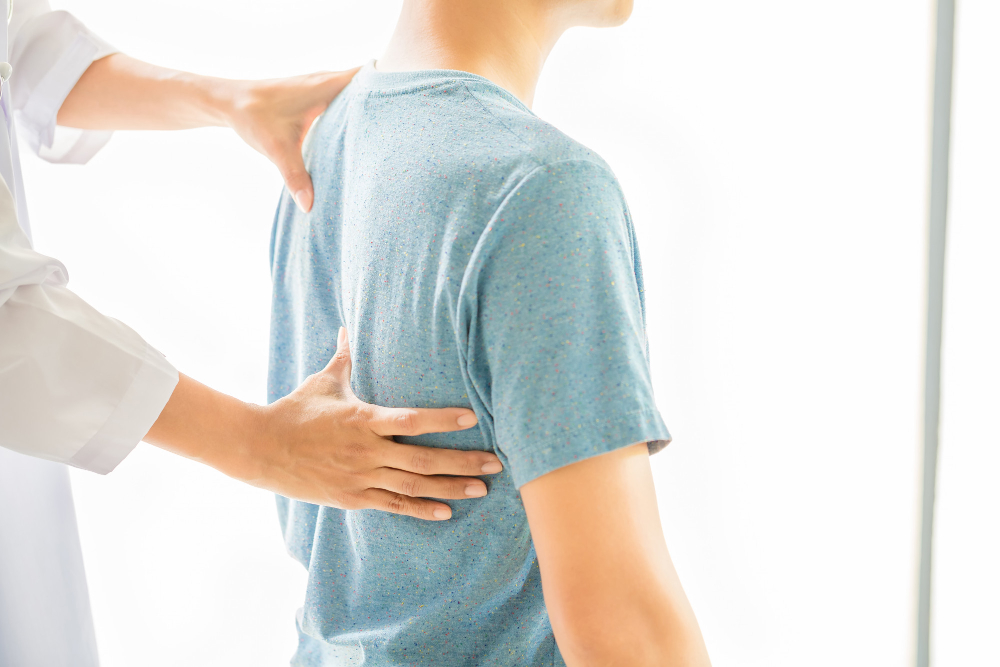Scoliosis, or in other words, spinal curvature, is a skeletal system disorder that occurs with the sideways bending of the spine. While a normal spine looks like a straight line when viewed from behind, a "S" or "C" shaped curvature is noticeable in scoliosis. Although it can be seen in all age groups, it is usually diagnosed in children and adolescents during growth periods. When left untreated, scoliosis can progress and negatively affect the quality of life.
In this article prepared by Prof. Dr. Özgür Taşkapılıoğlu, the causes, symptoms, diagnosis methods, and treatment options of scoliosis are discussed in detail.
What is Scoliosis?
Scoliosis is the condition of abnormal bending of the spine. This curvature usually occurs with the spine bending to the right or left and can disrupt the natural posture of the spine. Scoliosis can be classified as mild, moderate, or severe depending on the curvature angle.
Scoliosis can occur as a single curvature in the spine, or it can occur as a double curvature (one curvature to the right, the other to the left). This condition can affect the body's balance and posture, threatening the person's physical appearance and health.

What are the Causes of Scoliosis?
The cause of scoliosis may not always be determined. In this case, it is called idiopathic scoliosis. However, in some cases, underlying causes can be identified:
1. Idiopathic Scoliosis: It is the most common type and usually occurs during childhood or adolescence. Although the exact cause is unknown, genetic factors are thought to play a role.
2. Congenital Scoliosis: It occurs due to a congenital spinal anomaly. It can be diagnosed in infancy.
3. Neuromuscular Scoliosis: It develops as a result of neurological or muscle diseases such as muscular dystrophy and cerebral palsy.
4. Degenerative Scoliosis: It occurs due to wear and tear in the spinal discs or joints in advanced ages.
5. Trauma-Related Scoliosis: It can occur as a result of fractures or injuries in the spine.
What are the Symptoms of Scoliosis?
The symptoms of scoliosis vary depending on the degree and location of the curvature. While scoliosis may not cause any noticeable symptoms in some people, visual and physical complaints may be seen in others:
1. Asymmetry in Shoulders: One shoulder being higher than the other.
2. Irregularity in the Waist Line: One side of the waist appearing more hollow or flat than the other.
3. Difference in Hip Level: One side of the hips being higher than the other.
4. Curvature that Becomes Evident When Bending: The spinal curvature becomes more noticeable when the person bends forward.
5. Back Pain: It is a common symptom, especially in adults.
6. Respiratory Problems: Severe scoliosis can cause shortness of breath by restricting the expansion of the lungs.
How is Scoliosis Diagnosed?
The methods used to diagnose scoliosis are:
1. Physical Examination:
Adam's Test: The curvature of the spine is evaluated when the person bends forward.
Asymmetries in shoulder, hip, and waist alignment are checked.
2. Imaging Methods:
X-ray: It is the most commonly used method to measure the curvature angle (Cobb angle) of the spine.
MRI and CT: Preferred for investigating neurological or structural problems.

What are the Treatment Methods for Scoliosis?
Scoliosis treatment is planned according to the degree and type of curvature and the patient's age. While mild curvatures are usually followed regularly, severe scoliosis can go as far as surgical intervention.
1. Observation and Follow-up
In mild scoliosis (between 10-20 degrees), if the risk of curvature progression is low, regular check-ups are sufficient.
2. Physical Therapy and Exercise
Especially in mild to moderate scoliosis, physical therapy programs can be applied to support spinal health. Scoliosis-specific exercises such as the Schroth method help strengthen muscles and correct posture.
3. Brace Use
In moderate scoliosis (between 20-40 degrees), brace use is recommended in growing children to stop the progression of curvature. The brace is an effective method to delay or completely prevent surgical intervention.
4. Surgical Intervention
Surgical treatment is required in severe scoliosis (40 degrees and above) or in cases where the curvature is rapidly progressing.
Spinal Fusion: Stabilizing the spine by fusing the vertebrae together.
Growing Rods: Special implants used to correct curvature while preserving growth potential in children.
What are the Complications of Scoliosis?
Untreated scoliosis can lead to serious health problems in the long term:
Posture Disorder: It can cause aesthetic concerns and psychological problems.
Respiratory and Cardiac Problems: In advanced scoliosis, lung and heart functions can be negatively affected.
Persistent Pain: Imbalance on the spine can lead to chronic back and waist pains.
Ways to Prevent Scoliosis
Although scoliosis is not entirely preventable, some habits can reduce the risk:
Correcting Posture: Maintain correct posture while sitting or standing for long periods.
Exercising: Sports such as swimming, yoga, and pilates support spinal health.
Avoiding Heavy Bags: Pay attention that children's backpacks are not too heavy.
Scoliosis is a condition that can be controlled with early diagnosis and correct treatment. The effects on physical appearance and general health may increase depending on the progression of scoliosis. Therefore, regular check-ups, especially in children, should not be neglected, and a specialist should be consulted if any symptoms are noticed. A healthy spine is the foundation of a healthy life. Brain and Nerve Surgeon Prof. Dr. Özgür Taşkapılıoğlu, who serves in Bursa, wishes you healthy days.
Make an Appointment Now
+90 530 167 07 40